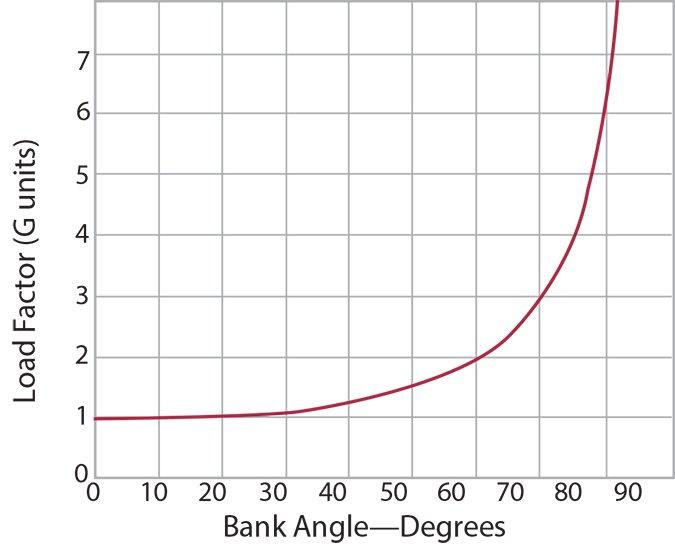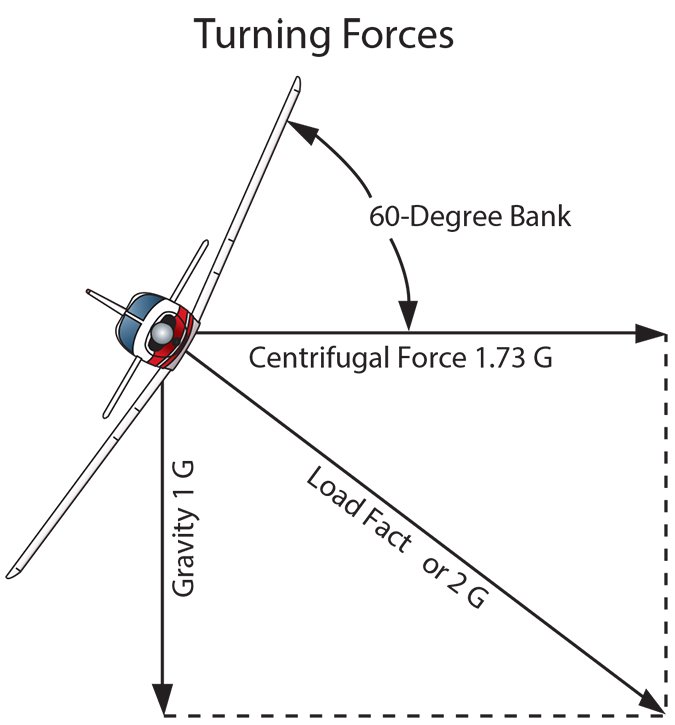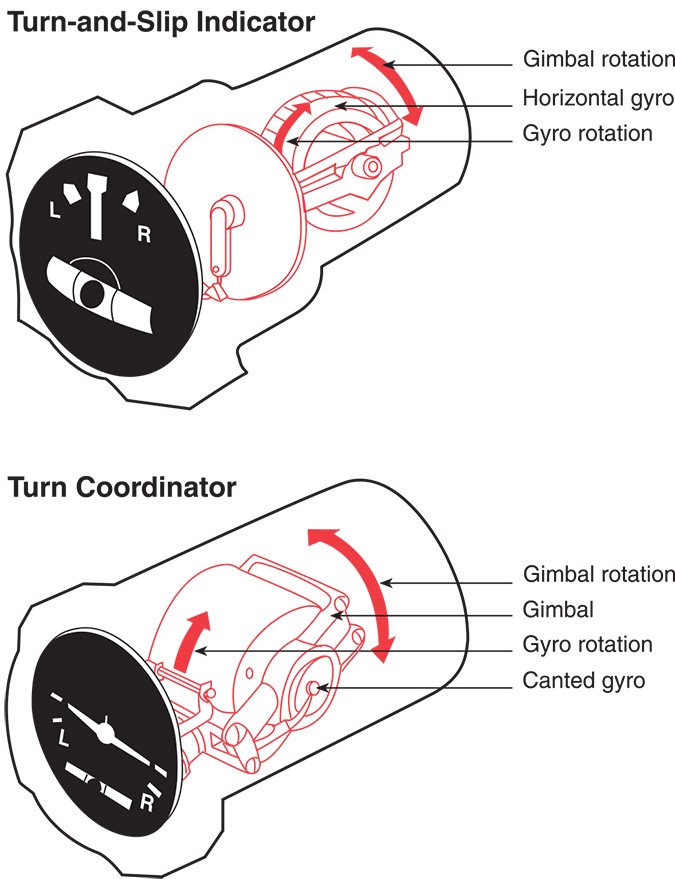Arguably the most challenging of all the Wright Brothers’ multiple successes involved mastering roll control. Pitch and yaw came relatively easy, but absent the ability to command a roll for a coordinated turn, aviation could go nowhere—at least nowhere near the intended heading. Their solution—wing warping—allowed for affirmative roll control and completed their mastery over all three axes.
Of course, warping isn’t the most mechanically efficient way to change a wing’s shape. Hence, ailerons evolved, along with other devices, to change the shape of a wing and use the new configuration to control the airplane’s direction. Turns of almost any bank angle are complex, shifting load vectors as they alter the direction of flight. Turns are not only a fundamental of flight and the most-common maneuver—they are commonly misunderstood.
D. Miller/Creative Commons
Can’t Fly Without Them
After the first takeoff, the very next thing a student pilot does is turn the plane. It’s the first of many turns as student pilots invest significant time training solely on turn control. We learn S-turns, ground-reference turns, turns around a point, minimum-controllable-airspeed turns and steep turns. Turns done badly lead to other problems—chief among them, loss-of-control accidents, or LOCA. In fact, they played a role in more than 40 percent of fixed-wing general aviation accidents from 2001 to 2011. Loss of control caused more fatalities than every other accident category.
So persistent are LOCA that the NTSB pegs them among its “Most Wanted” safety issues, and has for years. Hence the goal of turn training: Imprint students with the eye, hand and foot coordination skills needed for successful, safe maneuvering using instruments, eyes, hands, feet—and the anatomy filling the seat.
Turn-control basics:
From years of hangar-flying sessions, it seems many pilots’ turn skills start to deteriorate quickly after their private pilot checkride. They remember to use most of what they learned, but many lack focus on the accuracy of their flying. Precise turn control helps us be good pilot-neighbors in the pattern and lets us roll out on final aligned with the runway centerline. Turn control becomes a foundational skill for the pilot training to fly on instruments. More than a few instructors noted their frequent need to work on turns with pilots during biennial flight reviews. So, let’s revisit some turn basics.
Turning is simple enough: Put one hand on the throttle, one on the yoke or stick. Next, pick out a landmark off the nose. After sweeping for traffic, toes on the rudder pedals, initiate a shallow turn in either direction. Eyes out front to watch bank angle while adding back pressure to keep the nose level and prevent any altitude loss.
Watch for adverse yaw, which may want to drag the outside wing backward. Applying rudder pressure to the inside pedal helps swing around that outside wing and ensures the turn will be coordinated. It’s a coordinated turn when the little black ball centers up in the slip/skid indicator (or its electronic facsimile).

Watch for the desired heading to come around on the compass and with that landmark moving toward the nose, start rolling out when the remaining heading change is about double your bank angle. Roll back to level, ease off the back pressure and center the rudder. Piece of cake, right?
Establish a bank that changes heading at the rate of three degrees per second and you’re flying a standard-rate turn. By definition, it takes two minutes for a complete 360-degree heading change, or one minute for a 180-degree course reversal.
The physics of turns increase the load on the aircraft, hence the need for back pressure in pitch. And as you progress to steeper turns more power will come into play. But the goal is the same for all turns: To use all three axes and power as one maneuver, without slipping, skidding or stalling.
A Turn for the Worse: Gateway to Loss-of-Control
The FAA defines a “steep turn” as one of 30 degrees of bank or more. Many instructors—and examiners—want to see around 45 degrees when performing steep turns. As you should remember, turning increases the total load factor acting on the aircraft. The greater the bank and speed, the higher the load factor. The higher the load factor, the greater the stall speed goes.
Steep turns require more power and pitch to avoid the turn falling into a slip, but not so much more pitch as to stall. Stalls at steep bank angles can be everywhere from slightly disconcerting to outright deadly.

Prefacing this turn like all others—by scanning for traffic, perhaps with a clearing turn—the pilot rolls smoothly to about 45 degrees, eyes on the horizon; adjust power and pitch to maintain altitude while adding the rudder needed to keep the ball centered. Roll out with the same landmark on your nose—plus or minus 10 degrees—and within 100 feet of your starting altitude and 10 knots of entry speed.
An altitude cushion is essential because learning and practicing steep turns so often entails some blown attempts.
As the graph at top right demonstrates, increasing the bank angle increases the load factor. What’s not displayed is that stall speed increases by an amount equal to the square root of the load factor. So when you pull 2 Gs in a turn, the aircraft stall speed increases by about 40 percent (since the square root of 2 is about 1.4).
It takes very little else to go wrong for a stall while in a steep bank to deteriorate into a spin or the nose falling through and rapidly accelerating. Neither is any fun.
Aircraft Design and Turns
“Dihedral” describes the upward angle from horizontal built into the wing when mated to the fuselage. Anhedral, as the term implies, describes a downward angle.


At right, two aircraft are shown, nose-on. At top is a Beechcraft Model 33 Debonair/Bonanza; at bottom is a Cessna 206 Stationair. Note the differences in the intersect angles between the wings and the fuselage for each. The Beechcraft clearly has more dihedral than the Cessna, though it too has some.
Dihedral angle (or anhedral angle) has a strong influence on dihedral effect, the amount of roll moment produced per degree of sideslip, and is critical to an aircraft’s stability in the roll (longitudinal) axis.
The dihedral angle contributes to the total dihedral effect of the aircraft and, in turn, to the aircraft’s stability in the “spiral mode.” An aircraft designed with a stable spiral mode will cause it to eventually return to a “wings level” bank angle after being disturbed from a wings-level attitude. If a wings-level aircraft is disturbed—whether by turbulence or aileron input—it rolls and will begin moving sideways toward the lowered wing, a sideslip. When that happens, the lowered wing, which is moving forward more quickly than the other wing, experiences a greater angle of attack. The greater angle of attack translates into greater lift being generated by the lowered, accelerating wing. The greater lift tends to raise the lowered wing back to a wings-level attitude.
Design Varies Turn Traits
Regardless of bank angle, we know the turn is coordinated when the little black ball centers in the slip/skid indicator. That’s a constant. Like the two-minute mark on the turn indicator. But getting coordinated varies with aircraft.
Depending on the aircraft, we may lead the turn with ailerons and then adjust yaw and pitch. Or, we may need to begin the turn with rudder, either simultaneous with aileron input or slightly ahead of it. Some, for example, seem to prefer leading with the rudder then rolling into a coordinated turn. Some aircraft demand lots of rudder input while others require virtually none at all, up to a point. Regardless of which input starts the maneuver, all three axes—pitch, roll and yaw—are used to coordinate the turn and maintain altitude. We can take some clues on how all this fits together by considering the aircraft’s design.
For example, aircraft with little to no dihedral tend to need rudder attention for all turns and often turn better by leading with rudder. Aircraft with greater dihedral eventually adapt a coordinated turn through roll-yaw coupling with little rudder. Dihedral and its opposite, anhedral, are explained in greater detail in the sidebar above. Other aircraft need little to no rudder to twice the standard bank. Credit may belong to a design trait called “differential ailerons.” Differential ailerons, well, differ in the degree of deflection between inside and outside wings. The upward deflecting aileron on the inside wing moves a greater amount than the aileron pivoting downward on the outside wing. Not symmetrical. The different degrees of deflection counter adverse yaw, so up to a point—a specific bank angle, for example, little to no rudder is needed to coordinate the turn.
Ground-Reference Practice
Ground-reference maneuvers, as the name implies, use a landmark as the reference point for starting and ending the prescribed maneuver. But, for the record, turns-around-a-point do not mean that point remains stationary in the center of the turn throughout the 360 degrees. Instead, it’s merely a reference point for starting and ending the turn of the moment.
Let’s look at the FAA’s requirement for turns using the PTS check-ride standards. They’re listed in the box below.
When performing turns about a point, we consider the maneuver mastered when the student flies a path describing a concentric circle around the point while staying within the altitude and airspeed guidelines. Doing this requires the pilot to demonstrate the skill needed to vary bank angle to counter the changes in wind direction throughout the 360-degree maneuver. Success requires hand-and-foot coordination to vary bank angle, pitch and power to sustain the circle.
And the airspeed and attitude control skills learned in mastering turns also translate to other parts of the checkride, including short-field and soft-field takeoffs and landings, rejected landings and spin avoidance, all of which are elements of the typical checkride. Ditto for mastering turns while climbing and descending.
Standard-Rate Turns

With intentional steep turns being a notable exception, most turns during training and checkrides focus on turning at three degrees per second of heading change. This standard-rate turn results in a complete 360-degree turn in two minutes. It’s at the heart of both VFR and IFR maneuvering.
The beauty of the turn coordinator/indicator—and of its integral slip/skid ball—is the instrument shows the standard rate at whatever airspeed the pilot is flying. A standard-rate turn at 60 knots and one at 120 knots both take two minutes. What varies is the bank angle, and as bank angle varies so does load factor.
The pilot uses the inclinometer—the small ball in the glass tube—to gauge the turn’s quality: When the ball is centered, the aircraft is in a stable, coordinated turn.
The faster the aircraft, the steeper the bank angle required to establish a standard-rate turn, so aircraft faster than 250 knots or so often use a 25-degree bank angle as the standard rate.
According to the FAA, “A rule of thumb to determine the approximate angle of bank required for a standard rate turn is to use 15 percent of the true airspeed. A simple way to determine this amount is to divide the airspeed by 10 and add one-half the result. For example, at 100 knots, approximately 15 degrees of bank is required (100/10 + half of result = 10 + 5 = 15); at 120 knots, approximately 18 degrees of bank is needed….”
Inherent Risks
What’s the risk of something bad happening if you’re botching your turns? The most-prevalent risks emerge while flying a typical traffic pattern to a runway. That’s when the aircraft is closest to the ground and your time to correct is at its shortest. The generic label for accidents resulting from botched turns is loss of control, which we covered earlier.
The LOCA remains a persistent, stubborn problem that has proven resistant to different solutions over the years. In fact, there are many solutions and ways to prevent LOCAs, including avoiding low flying, maintaining an angle of attack below critical and never trying to fly VFR in instrument conditions. But the solution in most cases emerges from flying turns properly. Arguably the biggest risk from mismanaging turns and losing control arises as the stall/spin accident.
Contrary to some popular beliefs, stall/spin accidents don’t arise solely from flying too slowly. Instead, stall/spin accidents generally occur when flying the aircraft in an uncoordinated manner. They too frequently are deadly. Preventing LOCAs has gotten a lot of attention recently but the magic bullet has yet to be found: loss-of-control accidents keep happening, with stubborn regularity.
The classic example might be a pilot flying downwind who reacts to the ground speeding by slowing up. He or she can avoid the spin aspect by keeping the slip/skid ball centered while turning. On the flip side, airspeed can be fine but the pilot is turning into a tailwind with the slip/skid ball pinned at one end or the other. That’s a set-up for a spin accident, even without the pilot slowing the aircraft. In fact, the classic way to intentionally enter a spin is to slow the airplane to the point of stalling and kick some rudder in at the break. Most airplanes will smartly enter a spin.
And it’s important to remember that as turns get steeper, the effective stall speed increases as a factor of the higher loading. Even if the airplane is above its 1G stalling speed, it may not be above its new, loaded stalling speed. Again, if the stall break occurs in uncoordinated flight, the result often is a spin.
At the end of the day, flying precision turns and avoiding the pitfalls of badly coordinated turns just requires practice.
Dave Higdon is a Wichita-basedaviation addict who writes aboutand photographs aviation subjectsto fund a flying habit picked upduring the Disco Era.




